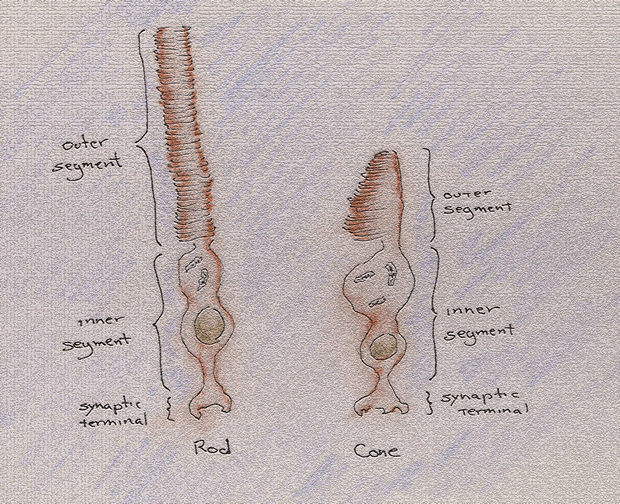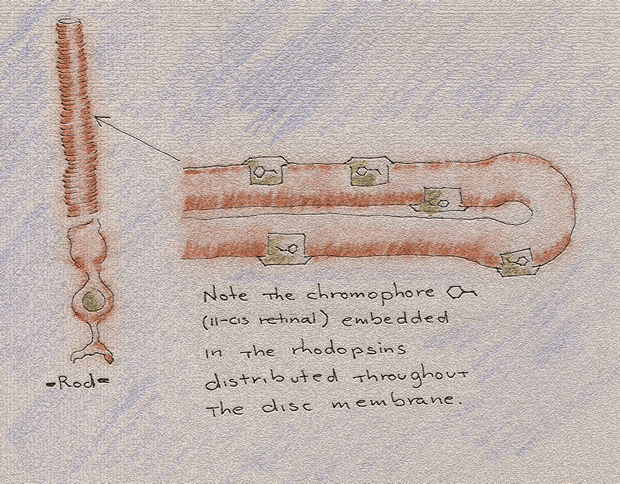Light (cont'd)
At some point in this scenario of a world illuminated by source light and reflected light, a photon will enter the eye (where it will eventually impart its energy to photosensitive elements within the photoreceptors—rods and cones—of the retina).

As photons pass through the matter of the cornea and lens of the eye, they slow down. The degree to which they do so is a function of the refractive index of the material in question. The result, in optimal situations, is that the train of photons, or light ray, focuses upon the retina at the back of the eye.
(Some photons, however, are actually absorbed by elements within the cornea and lens. This is particularly the case for photons with frequencies in the higher range of the spectrum near the area of UV light. Because light at these frequencies focuses in front of the retina when light at the low- and medium-wavelength frequencies is focusing, rather, on the retina, it must be absorbed and removed from the visual pathway to enhance visual acuity. In fact, the most visually acute portion of the retina, the fovea, is covered in a yellow pigment called xanthophyll, which is one last, additional means of removing any remaining blue light.)

But what matters most for vision is that the photons oscillating at visible frequencies be caught by photoreceptors within the retina of the eye. Here, the energy of the photon is imparted to a chromophore embedded within a pigment molecule of the photoreceptor. When it does so, it causes a cis-trans isomerization (essentially, a change in the shape of the 11-cis retinal molecule, which, in its new isomeric configuration, is called all-trans retinal).

As the chromophore straightens out, it pushes against the side of the opsin protein in which it is embedded. The resulting change in shape, or conformation, facilitates the docking of another, extra-cellular protein (a G-protein), which ultimately causes the cell to hyperpolarize and thus to reduce the amount of neurotransmitter that it was previously emitting. This then alters the signal that the brain was earlier receiving, prior to the perception of light.
Now, in effect, the photon’s energy has been transduced into a nerve impulse—a critical event. For information in the form of light energy is a foreign language to the brain and it is the job of the photoreceptors to translate or transduce light energy into the electro-chemical language of cell biology.
Having isomerized the 11-cis retinal molecule (the chromophore), light is an active part of the visual process no more.